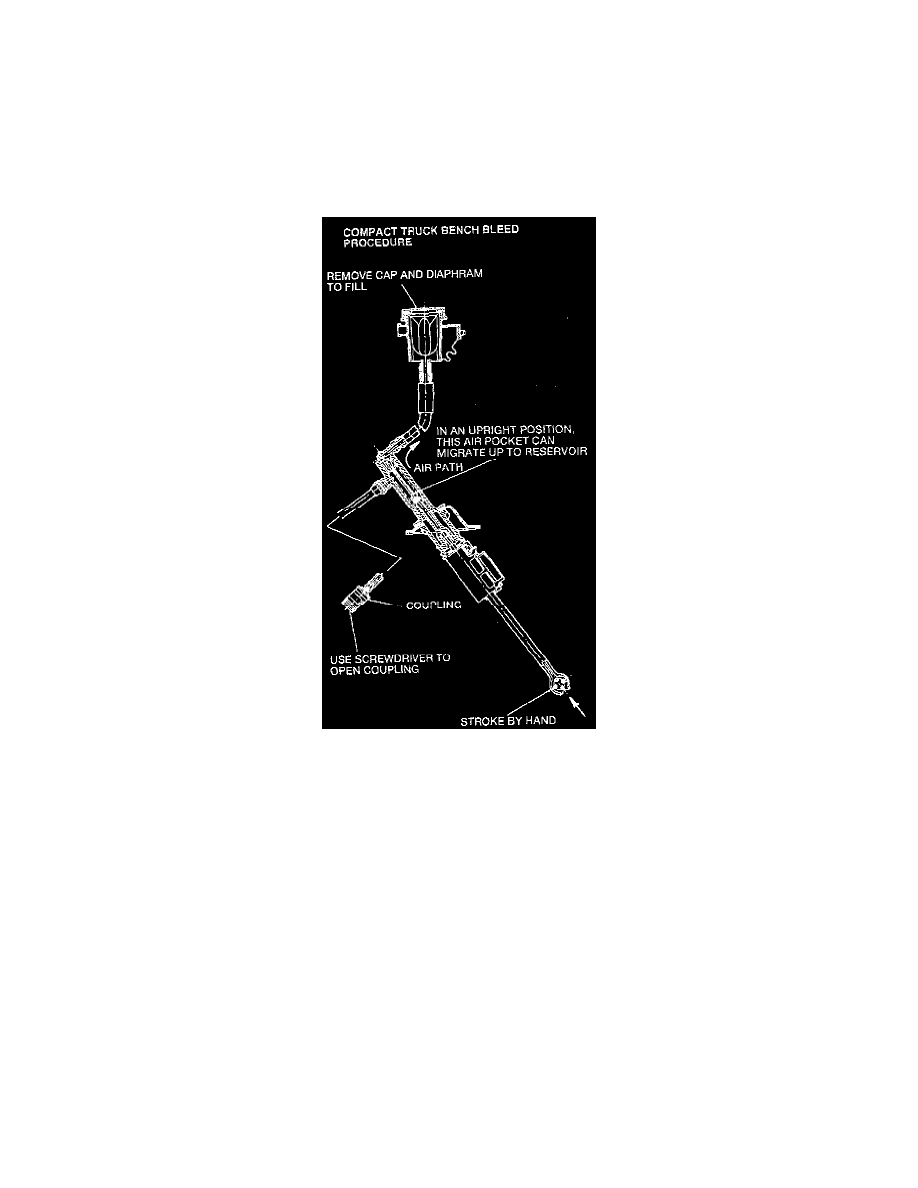B2300 SE Regular Cab 2WD L4-2.3L VIN A (1997)

Clutch Master Cylinder: Service and Repair
Bench Bleeding Procedure
NOTE:
^
When installing dry clutch master cylinder or tube service parts, do the Bench Bleed Procedure first.
^
If air is entrapped in the clutch hydraulic system, a "soft" unresponsive clutch pedal may be felt or the clutch may be unable to release.
^
The truck is more difficult to bleed because the downward angle of the master cylinder makes it difficult for air to escape up into the reservoir. If
the master cylinder is removed from the vehicle and bled while held in vertical orientation (a bench bleed) air can escape much more efficiently.
1. Hold the master cylinder vertically with the reservoir feed hose in the highest position on the body.
2. Fill the reservoir and extend above the master cylinder and assure the quick connect on the clutch line is below the master cylinder (lightly clamp
reservoir in a vise).
3. Using a small screwdriver, depress the internal mechanism of the male quick connect pipe to open the valve.
4. Stroke and hold the master cylinder pushrod.
5. Close quick connect valve.
6. Release master cylinder pushrod.
7. Fill reservoir.
8. Repeat Steps 3 and 7 four more times.
9. With the master cylinder still being held with the outlet tube and reservoir feed tube ends high, quick connect closed and the reservoir full, proceed
as follows:
a. Quickly push the pushrod into the body several times to remove any remaining air.
b. If it is a remote reservoir, pinch the supply hose with your fingers two or three times to help move air into reservoir.
10. When the movement of the pushrod is 4 mm (0.160 inch) or less when stroked in Step 9, reinstall the master cylinder into the vehicle and couple it
to the slave cylinder.
